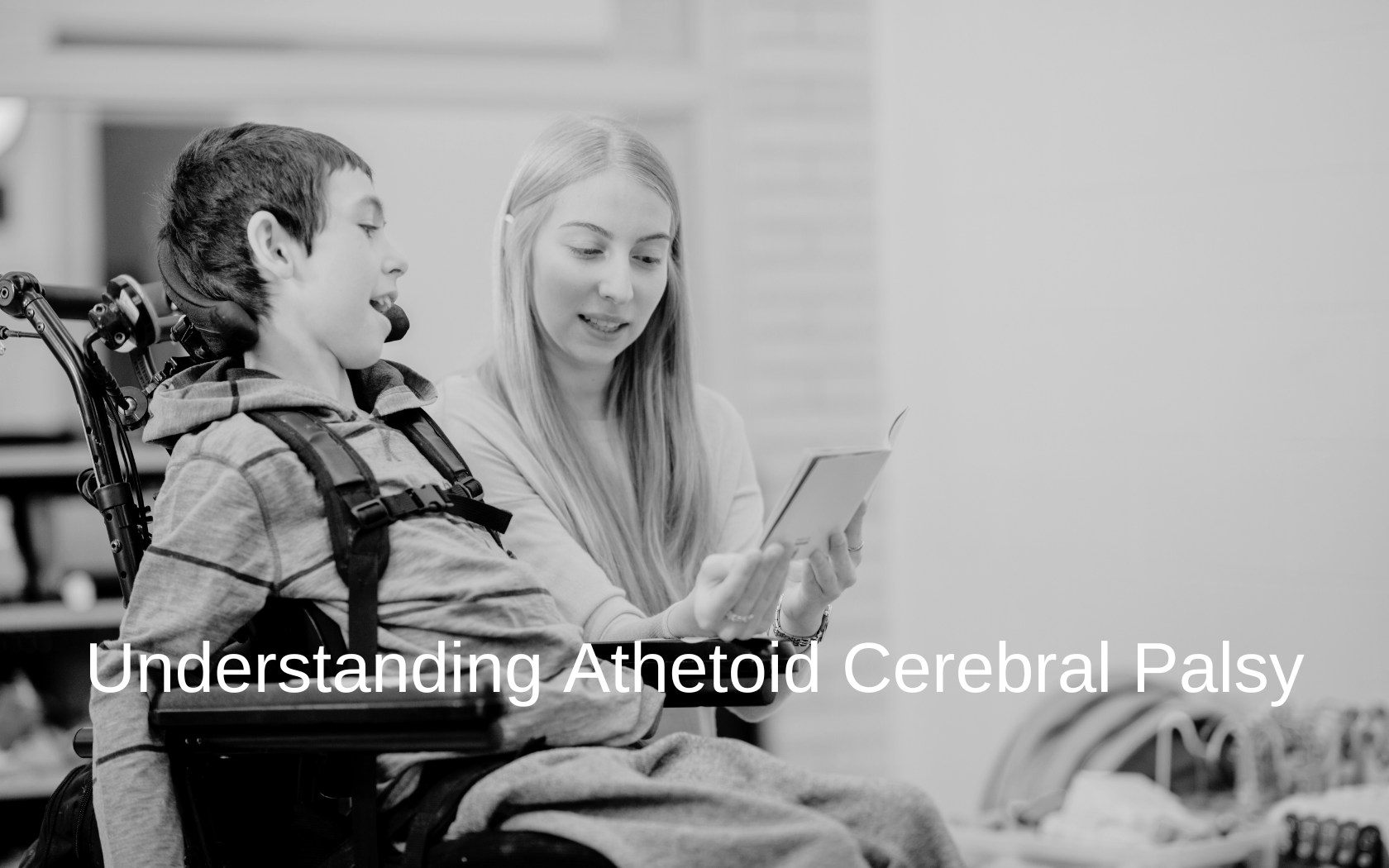Imagine trying to bring a spoon to your mouth, only for your hand to jerk away as if it has a mind of its own. It might sound like science fiction, but this is a reality for those with athetoid cerebral palsy.
Athetoid movements, which are often involuntary, can turn everyday tasks into major challenges. Stay with us to learn more about the symptoms of this condition and the treatments that can help manage its effects.

What is Athetoid Cerebral Palsy?
Cerebral palsy (CP) is a group of movement disorders. Athetoid CP is one of several types of CP. It’s also called dyskinetic cerebral palsy.
People with athetoid cerebral palsy often have involuntary movements, which can be slow or writhing. Athetoid movements often affect the hands, feet, arms, or legs, and sometimes the face.
People with athetoid CP usually have difficulty maintaining a steady posture. It’s hard for them to perform smooth, controlled movements.
What Causes Athetoid CP?
Athetoid cerebral palsy isn’t inherited. It usually occurs because of damage to a baby’s developing brain.
Specifically, it happens because there’s damage to the basal ganglia, the part of the brain that controls movement. It can also be related to damage in the cerebellum. That’s the part of the brain that regulates coordination.
This means that athetoid CP develops before babies are born. It can also develop because of an accident during birth or after birth.
The main causes include:
- Lack of oxygen (asphyxia) during birth or pregnancy, which can harm brain tissues.
- Premature birth, where the brain is not fully developed.
- Infections during pregnancy, such as rubella, toxoplasmosis, or cytomegalovirus, which can affect fetal brain development.
- Severe jaundice in newborns that is left untreated (kernicterus), leading to brain damage.
- Head injuries shortly after birth, from accidents or abuse.

Athetoid Cerebral Palsy Symptoms
Like all types of cerebral palsy, athetoid CP affects how a child moves. Symptoms vary from person to person. For some children, the symptoms may be much worse than for others.
Athetoid CP makes many physical tasks challenging, but it doesn’t usually affect a person’s intelligence.
Here are common symptoms of athetoid cerebral palsy:
- Involuntary movements (movements a person can’t control)
- Muscle tone switching between too tight and too loose
- Difficulty with tasks that require fine motor skills (using utensils, writing, buttoning clothes)
- Speech problems
- Difficulty with posture and coordination
- Trouble eating and swallowing
What Are Typical Athetoid Movements?
Athetoid movements are usually slow and writhing. The person might move their arms, hands and legs in a fluid but uncontrolled manner.
Depending on whether they have damage to the cerebellum, basal ganglia, or both, they might exhibit some of these athetoid movements as well:
- Sudden jerky movements in the limbs, face, and neck
- Involuntary facial movements, like grimacing, lip puckering, or tongue thrusting
- Abnormal postures because muscles contract uncontrollably
- Twisting the torso
- Tremors
- Involuntary movements that get worse when the child is stressed or tired
Treatment for Athetoid Cerebral Palsy
There’s no cure for any type of cerebral palsy at the moment. But treatment can help manage symptoms. It can help people with athetoid CP move around more easily, and improve their quality of life.
The different types of treatment for athetoid cerebral palsy include:
- Physical therapy to help strengthen muscles and improve coordination
- Occupational therapy to help patients perform daily tasks like eating and dressing
- Speech therapy
- Medications, such as muscle relaxants
- Assistive devices, like walkers, wheelchairs, and braces
- Surgery to correct deformities or improve muscle control
- Counseling and emotional support
- Alternative therapies, like aquatic therapy, horseback riding (hippotherapy), or music therapy

Financial Help for Athetoid Cerebral Palsy
Caring for a child with athetoid CP can be challenging, especially when athetoid movements make it hard for the child to accomplish daily tasks.
Treatment can make a huge difference for a child CP. But paying for quality treatment can become very expensive. In fact, estimates show treatment for CP can amount to around $1.3 million over a lifetime.
Here are some ways you could get financial aid for athetoid CP treatment:
- Private health insurance
- Public health insurance, like Medicaid or Medicare
- State and Federal programs, like the Individuals with Disabilities Education Act (IDEA)
- Children’s Health Insurance Program (CHIP) ( a program for children from low-income families who don’t qualify for Medicaid)
- Grants from Nonprofit Organizations or Charities (United Cerebral Palsy (UCP) Foundation or the Cerebral Palsy Foundation)
- Crowdfunding (like GoFundMe)
- Compensation from a cerebral palsy medical malpractice lawsuit
If you believe your child was diagnosed with cerebral palsy because of a negligence-related injury, contact our lawyers and schedule a free consultation. You may be entitled to compensation.




